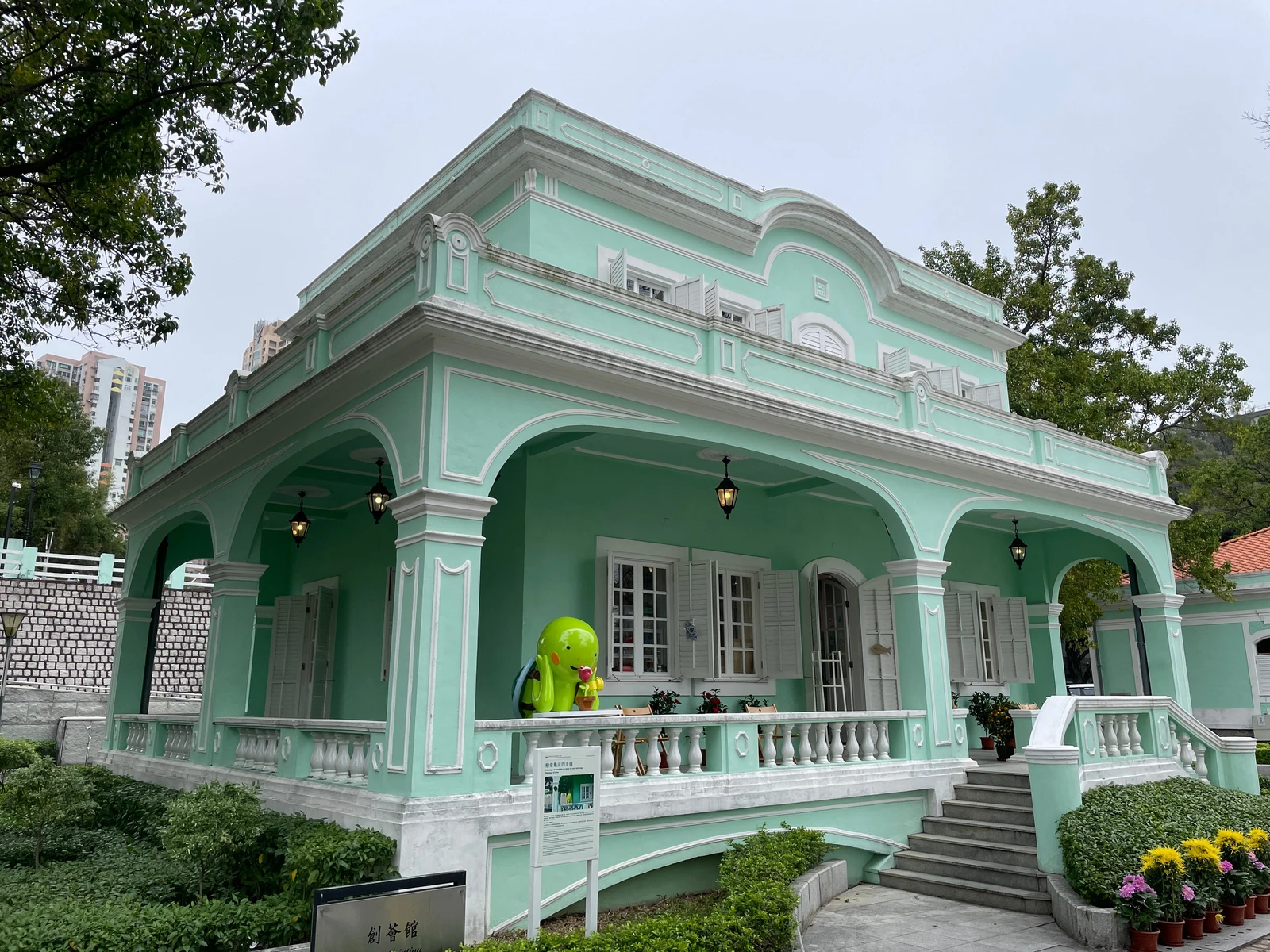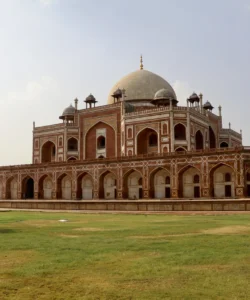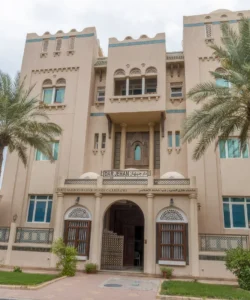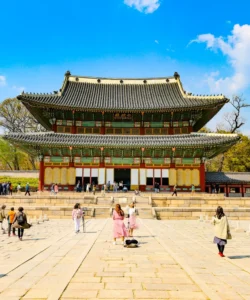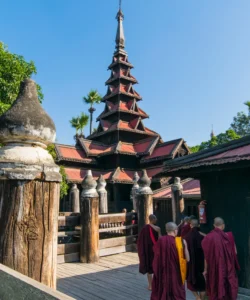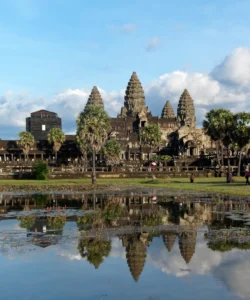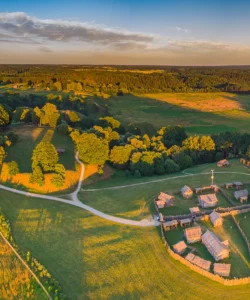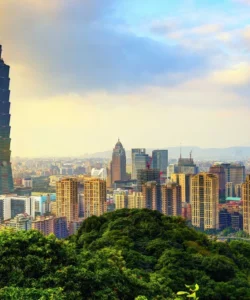The Taipa Houses-Museum is a picturesque cluster of five charming green colonial houses, beautifully preserved and standing as a testament to Macau’s unique blend of Portuguese and Chinese heritage. Located on Avenida da Praia in Taipa, this museum complex offers a tranquil and historically rich experience, contrasting with the bustling modern city.
![]()
Name: Taipa Houses-Museum (龍環葡韻住宅式博物館, in Portuguese: Casas-Museu da Taipa)
Address: Avenida da Praia, Carmo Zone, Taipa, Macau.
How to get there:
The Taipa Houses-Museum is conveniently located and easily accessible:
- From the Cotai Strip (Casinos): It’s a pleasant walk from many of the major resorts like The Venetian, Galaxy Macau, and City of Dreams. There’s often a pedestrian walkway/travellator system that connects the Cotai Strip to Taipa Village, from which the houses are a short stroll.
- By Bus: Numerous public bus routes (e.g., 11, 15, 22, 28A, 30, 33, 34) stop near Taipa Village or the Taipa Houses area. Look for stops like “T323 Ponte Negra / R.Do Regedor” or similar.
- By Taxi: Taxis can drop you off directly at the museum complex or nearby in Taipa Village.
- From Taipa Village: It’s a short and scenic walk from the famous Rua do Cunha (Food Street) in Taipa Village.
Landscape and Architecture:
The Taipa Houses-Museum comprises five distinctive green-painted houses, built in 1921. Their architecture is a classic example of Portuguese colonial residential style, characterized by:
- Neoclassical Design: Featuring elegant lines, balconies, and often wooden shutters.
- Green Facades: The signature light green color of the houses makes them visually striking and contributes to their charm.
- Avenida da Praia Setting: The houses are set along “Avenida da Praia” (Avenue of the Beach), which once overlooked the sea separating Taipa and Coloane islands. Due to extensive land reclamation that created the Cotai Strip, they now face a serene wetland area, adding to the picturesque scenery.
- Integrated Complex: The houses are part of a larger, harmonious landscape that includes the nearby Our Lady of Carmel Church, the Carmel Garden, and the Taipa Village itself, creating a cohesive and beautiful cultural precinct.
The five houses have been meticulously restored and repurposed with different themes:
- Macanese Living Museum: Showcases the daily life and living spaces of affluent Macanese families in the early 20th century, complete with period furniture and decorations.
- Exhibitions Gallery: Hosts temporary art and cultural exhibitions, often featuring local and international artists.
- Creative Casa: A platform for promoting Macanese and Portuguese-speaking countries’ culture, offering publications and specialty products.
- Nostalgic House: Features special exhibitions on Macanese culture, life, religion, architecture, and cuisine, including the evolution of the Cotai district.
- House for Receptions: Used for official banquets and cultural events, and generally not open to the public.
What makes it famous:
The Taipa Houses-Museum is famous for:
- Preserving Macanese Culture: It offers an authentic glimpse into the unique Macanese way of life, a fusion of Portuguese and Asian influences, particularly through the “Macanese Living Museum.”
- Iconic Photo Spot: The picturesque row of green houses against the backdrop of the wetland and the modern Cotai skyline makes it one of Macau’s most beloved and photographed landmarks.
- Architectural Heritage: Recognized as a building complex of architectural value, it showcases well-preserved Portuguese colonial residential architecture.
- Cultural Hub: Beyond just a museum, it serves as a venue for cultural events, art exhibitions, and a showcase for the diverse cultures of Portuguese-speaking countries, especially during events like the Lusofonia Festival.
- Tranquil Escape: It provides a peaceful and scenic contrast to the vibrant and often overwhelming energy of Macau’s gaming resorts, offering a different side of the city.
Differences from some other wonders:
Compared to other prominent attractions in Macau, the Taipa Houses-Museum stands out:
- Focus on Residential Life and Culture: While places like Fortaleza do Monte and Guia Fortress are military and defensive structures, and the Ruins of St. Paul’s are religious ruins, the Taipa Houses-Museum specifically delves into the domestic and social life of the Macanese community during the colonial era. It’s about a specific way of life rather than grand historical events or religious devotion.
- Intimate Scale and Personal Insight: Unlike large, imposing structures, the houses offer a more intimate and personal experience, allowing visitors to imagine the daily routines of the families who once lived there.
- Pastoral Charm vs. Urban Grandeur: While sites on the Macau Peninsula might be embedded in a dense urban fabric, the Taipa Houses-Museum benefits from its tranquil setting by the wetland, offering a serene, almost rural, charm that’s distinct from the bustling city centers.
- Living Museum Concept: Its multi-themed houses, including an active exhibition space (“Exhibitions Gallery”) and a cultural shop (“Creative Casa”), make it more than just a static historical display; it’s a dynamic cultural center.
- Symbol of Macanese Identity: It’s a profound symbol of the unique Macanese identity, a creole culture born from the blend of Portuguese and various Asian influences, which is a key aspect of Macau’s UNESCO World Heritage status. Many other sites showcase the Portuguese influence, but these houses specifically highlight the resulting Macanese way of life.
